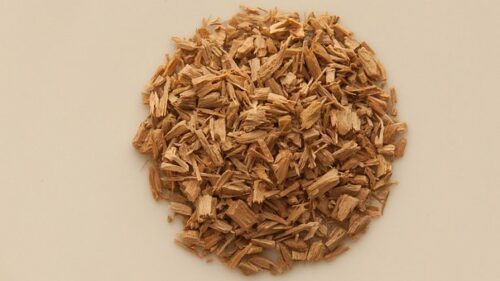
Sandalwood (Santalum spicatum & album)
Sandalwood is a commercially and culturally important plant species especially in India belonging to the family Santalaceae. The wood is valued in carving because of its dense character. Sandalwood oil is extracted from the heartwood by steam distillation. The average yield of oil ranges from 3.0% to 6.0%. The sweet, powerful, and lasting odor has made sandalwood oil useful in the perfume industry, soaps, candles, incense, folk medicine, and religious and cultural purposes for centuries.
In addition, the wood and its powder are used for religious and medicinal purposes, and the food industry, especially in India. The sandalwood tree flourishes in regions where the climate is cool with moderate rainfall, plentiful sunshine, and long periods of dry weather. The tree is planted in different states of India but large commercial cultivation state is Karnataka. The trees are slow growing and usually take about 30 years for the heartwood to become economically useful in India.

Santalum spicatum is used by aromatherapists and perfumers. The oil concentration differs considerably from other Santalum species. In the 1840s, sandalwood was Western Australia’s biggest export earner. Oil was distilled for the first time in 1875, and by the turn of the 20th century, production of Australian sandalwood oil was intermittent.
Santalum album is a threatened species indigenous to South India and grows in the Western Ghats and a few other mountain ranges such as the Kalrayan and Shevaroy Hills. Although sandalwood trees in India, Pakistan, and Nepal are government-owned and their harvest is controlled, many trees are illegally cut down.
In Kununurra in Western Australia, Indian sandalwood is grown on a large scale. This species is the primary source of sandalwood used in commercial oil production and should not be confused with West Indian Sandalwood, Amyris balsamifera.

Major Constituents
(Z)-a-Santalol, (Z)-B-Santalol, (Z)-Nuciferol, epi-B-Santalol & (Z)-a-trans-Bergamotol
Sandalwood Essential Oil Uses
Bronchitis, Chapped Skin, Depression, Dry Skin, Laryngitis, Leucorrhea, Oily Skin, Scars, Sensitive Skin, Stress, & Stretch Marks
In traditional medicine, sandalwood oil has been used as an antiseptic and astringent, and for the treatment of headache, stomachache, and urinary and genital disorders.
In India, the essential oil, emulsion, or paste of sandalwood is used in the treatment of inflammatory and eruptive skin diseases.
The oil has been used in the traditional Ayurvedic medicinal system as a diuretic and mild stimulant, and for smoothing the skin.
The leaves and bark were used by early Hawaiians to treat dandruff, lice, skin inflammation, and sexually transmitted diseases.
Sandalwood oil has also demonstrated repellency against the crop pest Tetranychus urticae (two-spotted spider mite).
Side Effects
When taken by mouth: White sandalwood is likely safe when taken by mouth in food amounts. But it is unsafe when taken by mouth as a medicine for longer than 6 weeks. There have been reports of kidney damage with prolonged use. White sandalwood can also cause itching, nausea, and stomach upset.
Medication Interactions
Lithium interacts with WHITE SANDALWOOD: sandalwood might have an effect like a water pill or “diuretic.” Taking sandalwood might decrease how well the body gets rid of lithium. This could increase how much lithium is in the body and result in serious side effects. Talk with your healthcare provider before using this product if you are taking lithium. Your lithium dose might need to be changed.

